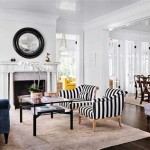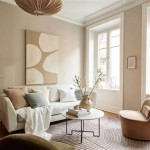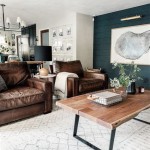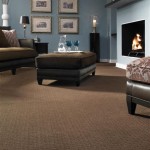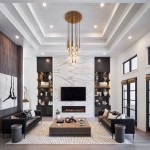Decoration Pictures For Living Room: A Comprehensive Guide
The living room, often considered the heart of a home, serves as a central gathering space for families and a welcoming area for guests. As such, its decoration plays a significant role in establishing the overall ambiance and reflecting the residents' personal style. Decoration pictures, in particular, offer a versatile and impactful means of enhancing the visual appeal of a living room, acting as focal points and contributing to the room's thematic coherence.
Choosing the right decoration pictures for a living room requires careful consideration of several factors, including the room's size, existing color palette, furniture style, and the desired overall mood. The art selected can range from paintings and photographs to prints and mixed media pieces, each offering a unique aesthetic and contributing to the room's personality. The scale of the artwork is also crucial; large pieces can command attention in spacious rooms, while smaller works might be more suitable for intimate settings. The placement of these decoration pictures is equally important, influencing how they interact with the surrounding environment and how effectively they complement the room's design.
Furthermore, the frame selected for the artwork significantly contributes to its overall presentation and integration with the room's décor. Choosing a frame that complements both the artwork and the existing furniture can create a cohesive and polished look. The framing material, color, and style should all be carefully considered to ensure that the decoration picture effectively enhances the living room's aesthetic.
Selecting the Right Style of Decoration Pictures
The style of decoration pictures chosen for a living room should align with the overarching design theme and personal preferences. A modern living room, for instance, might benefit from abstract art or minimalist photography, while a traditional space could be enhanced by classic landscapes or portraits. Understanding the various art styles available and how they interact with different interior design schemes is crucial for creating a visually appealing and harmonious living room.
Abstract art, characterized by non-representational forms and colors, can add a touch of contemporary sophistication to a living room. Its ambiguity allows for individual interpretation and can serve as a conversation starter. Conversely, representational art, such as landscapes and portraits, offers a more direct connection to the viewer, evoking specific emotions and memories. The choice between abstract and representational art depends largely on the desired ambiance and the homeowner's personal taste.
Photographs, whether black and white or color, can also serve as effective decoration pictures. Landscape photography can bring the beauty of the outdoors into the living room, while portrait photography can add a personal touch. Architectural photography can highlight the geometric forms and structural details of buildings, while abstract photography can explore textures and patterns in unexpected ways. The possibilities are vast, and the selection should be guided by the desired aesthetic and the photographer's skill in capturing compelling images.
Prints, including reproductions of famous artworks or original designs, offer a more affordable option for decorating a living room. Prints can be easily customized to match the room's color scheme and style, making them a versatile choice for budget-conscious homeowners. The quality of the print is important, as a high-resolution print will appear sharper and more vibrant than a low-resolution one. Choosing a reputable printer and using archival-quality paper can ensure that the print will last for many years.
Mixed media art, which combines different materials and techniques, can add a unique and textured element to a living room. Collage, assemblage, and sculpture are all examples of mixed media art that can be incorporated into a living room's décor. Mixed media pieces often incorporate unconventional materials, such as fabric, metal, and found objects, creating a visually stimulating and tactile experience.
Considering Color and Composition
The color palette of decoration pictures should complement the existing colors in the living room. Coordinating the colors of the artwork with the wall color, furniture, and accessories can create a cohesive and harmonious look. A complementary color scheme, which uses colors that are opposite each other on the color wheel, can create a vibrant and energetic feel. An analogous color scheme, which uses colors that are next to each other on the color wheel, can create a more calming and harmonious feel.
The composition of the artwork is also important. A well-composed piece will guide the viewer's eye through the image, creating a sense of balance and harmony. The arrangement of elements within the artwork, such as lines, shapes, and colors, should be carefully considered to create a visually pleasing and engaging piece. Understanding the principles of composition, such as the rule of thirds and leading lines, can help in selecting artwork that is both visually appealing and well-balanced.
When selecting decoration pictures, consider the use of contrast. High contrast images, with strong differences in light and dark, can create a dramatic and impactful effect. Low contrast images, with subtle gradations in tone, can create a more peaceful and serene feel. The level of contrast should be chosen based on the desired mood and the overall design of the living room.
The use of symmetry and asymmetry can also influence the overall feel of the room. Symmetrical compositions, with elements arranged in a balanced and mirrored fashion, can create a sense of order and formality. Asymmetrical compositions, with elements arranged in a less predictable manner, can create a more dynamic and informal feel. The choice between symmetry and asymmetry depends on the desired aesthetic and the overall design style of the living room.
Placement and Framing Considerations
The placement of decoration pictures is crucial for maximizing their impact and creating a visually balanced living room. The size of the artwork should be proportional to the wall space, and the artwork should be hung at eye level for optimal viewing. Consider the lighting in the room and how it will affect the appearance of the artwork. Avoid placing artwork in direct sunlight, as this can cause fading and damage over time.
Grouping multiple smaller pictures together can create a gallery wall effect, adding visual interest and personality to the living room. When creating a gallery wall, consider the spacing between the pictures and the overall arrangement. A cohesive theme or color palette can help to tie the gallery wall together and create a unified look. Experiment with different layouts before committing to a final arrangement.
The frame selected for the artwork significantly contributes to its overall presentation and integration with the room's décor. The framing material, color, and style should all be carefully considered. A simple, minimalist frame can complement modern artwork, while an ornate, traditional frame can enhance classic paintings. The frame should not detract from the artwork itself, but rather enhance its visual appeal and complement the surrounding environment.
Consider the use of mats when framing artwork. A mat can create a buffer between the artwork and the frame, protecting the artwork from damage and adding visual depth. The color of the mat should complement both the artwork and the frame. A white or off-white mat is a classic choice that works well with a variety of artwork and frame styles.
The hanging hardware used to display decoration pictures should be sturdy and reliable. Use appropriate hooks and wires to ensure that the artwork is securely mounted on the wall. Level the artwork carefully to avoid a crooked or uneven appearance. Consider using picture hanging strips, which allow for easy repositioning and removal without damaging the walls.
In summary, selecting and placing decoration pictures in a living room involves careful consideration of style, color, composition, placement, and framing. By thoughtfully addressing these elements, one can create a visually appealing and personalized living space that reflects individual taste and enhances the overall ambiance of the home.

80 Gorgeous Living Room Decorating Ideas For Every Style

All About Living Room Decor For Your Home Design Cafe

Wall Art Canvas Painting Abstract Feather Posters And Prints Pictures For Living Room Modern Cuadros Home Decoration

Modern Living Room Wall Decoration Ideas Upgrade Your Space

Modern Living Room Decor Ideas For The Perfect Makeover

Christmas Living Room Soft Blue Gold Citrineliving

45 Living Room Wall Decor Ideas From Designers Havenly Interior Design Blog

Seven Effective Drawing Room Decoration Ideas Design Cafe

Living Room Wall Decoration Ideas 2025 For Modern And Luxury Feel Shaghaf Home

Christmas Living Room Decor Ideas Wow 1 Day Painting


